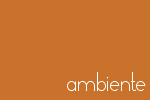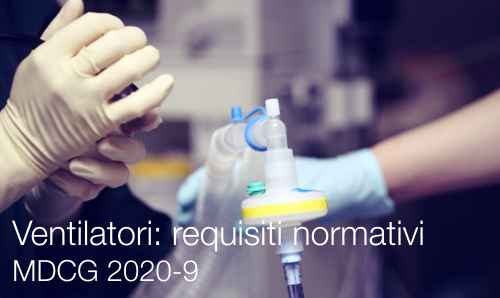Ventilatori MD: requisiti normativi | MDCG 2020-9
| Appunti Marcatura CE | ||
| 15 Maggio 2025 | ||
| Salve Visitatore | ||
Ventilatori MD: requisiti normativi | MDCG 2020-9 EU, 29 Aprile 2020 MDCG 2020-9 Regulatory requirements for ventilators and related accessories Medical Device Directive 93/42/ECC. The World Health Organization (WHO) declared the COVID-19 outbreak a pandemic on March the 12th 2020. Patients infected by SARS-CoV-2 virus and developing the COVID-19 disease with acute and severe respiratory symptoms have to be treated with mechanical ventilators to assure possibilities of survival. This guidance document focuses on ventilators and related accessories that are currently regulated under the Council Directive 93/42/EEC (MDD). According to the MDD, devices may be placed on the market and/or put into service only if they comply with the requirements laid down in this Directive when duly supplied and properly installed, maintained and used in accordance with their intended purpose. The devices must meet the essential requirements set out in Annex I of the MDD, which apply to them, taking account of the intended purpose of the devices concerned. In addition, devices may be placed and circulate on the European single market if they have been subject to a conformity assessment in accordance with the provisions of Article 11 of the MDD. Under the current COVID-19 context, the demand for ventilators and related accessories has rapidly increased. Therefore, this document intends to outline the different regulatory options for placing these devices on the EU market indicating their feasibility to allow short-term supply. Index TYPES OF MEDICAL DEVICES AND THEIR PARTS/COMPONENTS Ventilators Ventilators are breathing support devices and can fall into different types according to their intended use and characteristics - Ventilator for critical care: automatic equipment that is intended to augment or provide ventilation of the lungs of the patient when connected to the airway of the patient: Ventilators for critical care are usually invasive, which enables the ventilator machine to provide lung support for inspiration and expiration through tracheal intubation. However, most critical care ventilators allow non-invasive ventilation modes for critical care patients as well. Ventilators for non-critical care are usually non-invasive and therefore provide air pressure support to natural breathing through e.g. a facemask. Ventilators may offer different types of additional complementary functions that include: - High flow oxygen supply (nasal high flow therapy); ... CLASSIFICATION Ventilators There are different types of ventilators depending on the degree of invasiveness and the setting in which they are used in (e.g. Intensive Care Unit - ICU). Ventilators fall under two different classes in accordance with rule 11 (or rule 9) of Annex IX6,7 to the MDD: - Class IIa: only applicable to non-invasive devices, e.g. continuous positive airway pressure – CPAP non-intended for critical care, or devices that only support spontaneous breathing. The classification depends on the intended purpose of the ventilator and has important implications in the selection of appropriate conformity assessment procedure(s) for the device including timing and complexity (see section 4 for details). [...] Segue in allegato Fonte: EU Collegati:  |
||
 |
||
| www.certifico.com
è un sito di INVIO NEWSLETTTER Se vuoi cancellarti dall'invio della newsletter oppure effettua il login al sito ed entra nella Tua Area Riservata, in “Modifica dati” agisci con la spunta sul box di selezione “nNewsletter”. L'Elenco completo di tutte le ns newsletter è qui: Archivio newsletter. |
||
  |
||
| Certifico Srl 2000-2020 | VAT IT02442650541 | ||

































